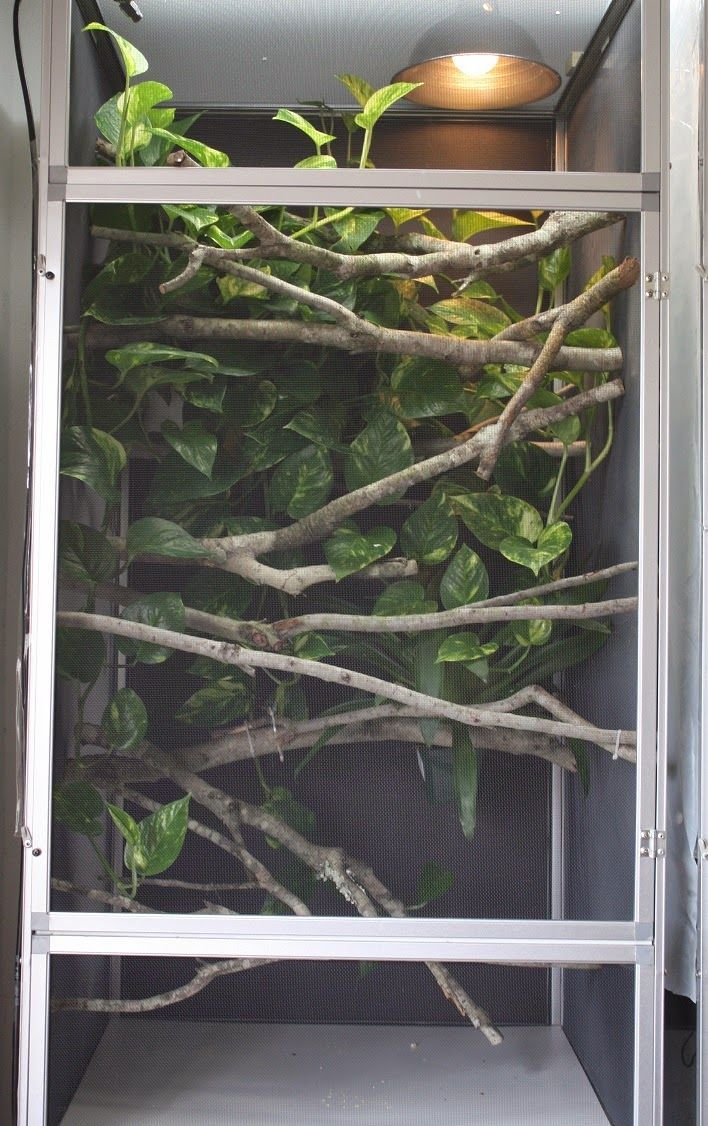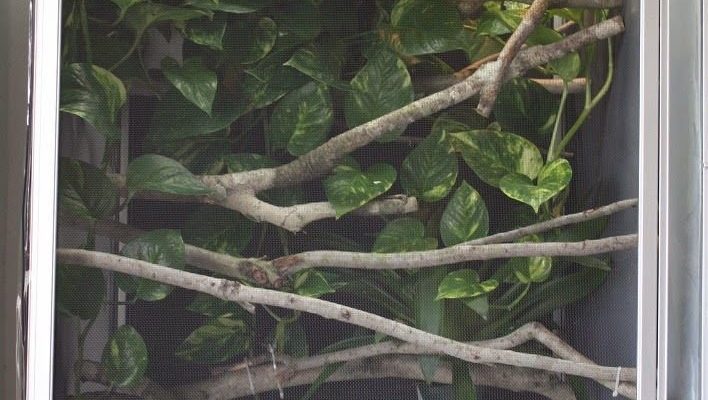
Imagine your chameleon lounging on a branch, basking under a warm light, surrounded by lush greenery and a gentle mist in the air. This setup not only keeps your chameleon happy but also healthy. In this article, we’ll explore everything you need to know about creating a thriving enclosure, covering factors like size, temperature, humidity, and what plants to include. So, let’s transform your chameleon’s living space into a mini paradise!
Choosing the Right Size Enclosure
When it comes to chameleons, size matters—a lot! Flap-necked chameleons are active climbers, and they need ample space to move around. Ideally, you should look for a tall enclosure rather than a wide one. A 24-inch by 24-inch by 48-inch (width x depth x height) enclosure is a great starting point.
Why height? These chameleons love to climb, and vertical space allows them to explore their environment. It also helps them feel secure, as they can find higher spots where they can bask or hide. If you’re setting up a larger enclosure, like a 36-inch tall one, it gives your chameleon even more room to roam!
Also, consider materials. A well-ventilated screen cage is often the best option, as it promotes airflow and helps keep humidity levels stable. Glass enclosures can hold moisture but can lead to temperature fluctuations. So, keep airflow in mind when making your choice!
Temperature Requirements
Creating the right temperature gradient is crucial for your flap-necked chameleon’s health. You’ll want to establish a basking spot that’s around 85°F to 90°F during the day. This spot mimics the sun’s warmth and is essential for digestion and overall well-being.
To achieve this, use a basking bulb or a heat lamp focused on one corner of the enclosure. Just a gentle reminder: be careful not to place the lamp too close, as chameleons can be sensitive to overheating. On the cooler side of the cage, aim for temperatures around 70°F to 75°F. This allows your chameleon to regulate its body temperature by moving between the warm and cooler areas.
At night, let the temperatures drop a bit. Flap-necked chameleons thrive with a nighttime temperature of around 65°F to 70°F. If your room gets too cold at night, consider adding a heat mat or ceramic heat emitter for extra warmth. Keeping track of these temperatures is easier with a digital thermometer that features a probe you can place in both areas.
Humidity Levels
Humidity is another key factor in your flap-necked chameleon’s environment. Ideally, you should maintain a humidity level of 50% to 70%. This mimics their natural habitat and ensures they stay hydrated, especially when they drink from water droplets on leaves.
To achieve this, frequent misting is a great option. Use a handheld spray bottle or an automated misting system to create a gentle mist twice a day. Honestly, watching your chameleon sip water droplets off the leaves can be quite the charming scene. Just be sure not to overdo it; excessive moisture can lead to mold growth or health issues for your chameleon. Using a hygrometer can help you monitor and adjust humidity levels accordingly.
For added humidity, you might consider including live plants in your setup. They not only help maintain humidity but also provide shelter and enrichment for your chameleon. This leads us to our next important factor.
Choosing the Right Plants
Plants play a vital role in your chameleon’s enclosure, providing both a natural look and essential hiding spots. You want to choose non-toxic plants that can thrive in humid environments. Popular options include:
- Pothos: A hardy, fast-growing plant that’s perfect for climbing.
- Ficus: Offers plenty of leaves and branches for your chameleon to explore.
- Spider Plants: They’re resilient and can adapt well to varying humidity levels.
When setting up your plants, be sure to avoid any that are toxic to reptiles, such as lilies or pothos. Placing plants at different heights encourages your chameleon to climb and bask at different levels, mimicking their natural behavior.
Also, remember to clean the plants regularly, as they can collect dust in a humid environment. You want your chameleon’s home to be as inviting and healthy as possible!
Lighting Considerations
Good lighting is crucial for your flap-necked chameleon, as it affects their health, mood, and activity levels. You’ll need to provide a full spectrum UVB light to help them synthesize vitamin D3, which is essential for calcium absorption and prevents metabolic bone disease.
Aim for a UVB output of 5.0 to 10.0 on a T5 tube or compact fluorescent bulb, positioned about 12 inches away from the basking area. Replace the bulb every six months to ensure it maintains proper UV output. Remember, they need a light cycle too—about 10 to 12 hours of light each day. A timer can help keep everything consistent.
And don’t forget about ambient lighting! It’s essential for simulating natural day-night cycles. Using a combination of bright and subdued lighting creates a dynamic environment for your chameleon.
Feeding and Watering
Feeding your flap-necked chameleon is more than just dropping in some crickets. It’s a chance to provide a balanced diet that keeps them healthy and vibrant. These chameleons primarily eat insects like crickets, roaches, and mealworms, along with occasional leafy greens and fruit.
Dusting their food with a calcium powder several times a week is a great way to boost their dietary intake. You might also want to offer a variety of insects to keep them interested. Here’s the thing: variety prevents boredom and keeps your chameleon healthy!
As for watering, many chameleons prefer drinking water droplets rather than standing water. This is where misting comes in handy again! You can also try setting up a drip system that provides a slow trickle of water. Just make sure to keep an eye on the water bowl if you decide to include one to avoid bacteria buildup.
Common Challenges and Troubleshooting
Even with the best setup, you might face some challenges. Issues like improper humidity, temperatures, or lack of hiding spots can stress your chameleon. If your chameleon is staying hidden for long periods, it might not feel secure in its environment.
To troubleshoot, regularly check the temperature and humidity levels. If it’s too dry, you might need to up your misting game or add more plants. If it’s too humid, try increasing ventilation or decreasing misting frequency.
Another common problem is the chameleon not eating. This can be due to stress, improper lighting, or even temperature issues. If you notice this, take a step back and assess the environment. Have you changed anything recently? Sometimes, even small changes can have a big impact!
Building a happy and healthy home for your flap-necked chameleon is all about attention to detail and patience. Creating the ideal enclosure might take some time, but your colorful companion will thank you with its vibrant presence.
In the end, remember that your chameleon’s enclosure should reflect its natural habitat—balancing warmth, humidity, and space. With the right setup, you’ll give your flap-necked chameleon a thriving environment where it can live, climb, and be happy. And honestly, it’s a joy to watch them thrive!

